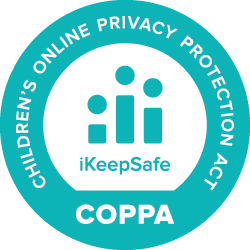Glass
Look in your refrigerator and pantry. How many products come in glass bottles or jars? Because foods don't dissolve glass, it's a great storage material. It also lasts for a long time.
Resource Title:
Glass
Description:
Look in your refrigerator and pantry. How many products come in glass bottles or jars? It's likely that those glass containers hold foods that are very acidic, like pickles, tomatoes, and orange juice. Because foods don't dissolve glass, it's a great storage material. It also lasts for a long time.
Target Grade Level:
Grades K - 12
Discipline or Course (Audience):
Science
Time Frame:
One 45-minute session
Suggested Grouping:
Individual
Key Vocabulary:
glass, silicon
Remote Learning Adaptations:
This resource is appropriate for remote learning; no adaptations or modifications are necessary.
STUDENT CONTENT BELOW THIS LINE
Silicon (Si), the major element that makes up glass, is one of the most common elements on the planet. It’s found in quartz, other igneous rocks, and many forms of sand. The commercial material we call “glass” is actually created from quartz sand, soda ash, feldspar, and limestone. New glass products can be made using recycled glass, called "cullet."
Like carbon (C), silicon can be formed and reformed into new products. Glass is almost 100 percent recyclable, and up to 70 percent of the materials in new products can come from previously used glass. When we use recycled glass to make new bottles, ceramics, or even works of art, we save up to 34 percent of the energy needed to make the product. That’s because it takes high temperatures to melt glass into the right form. Bits of used glass can also be made into abrasive products like sand paper. There are even bits of glass in some concrete roads, to make them last longer and provide better traction when it is slippery.
Glass recycling doesn’t just save materials and energy. It saves room in landfills, as well. When you have walked on a beach, you may have seen bits of weathered glass. The glass may look as if the physical abrasion of other forms of silicon, wind, and weather is breaking it down. But in a landfill, that glass could last for one million years! That’s because there is no physical abrasion to rub and break down the hard glass into smaller bits like sand.
So when you see that blue bin on a curb or a big recycling bin in a public place, think twice about the bottle that holds your soda or favorite salsa. Its value never ends.
Figure 1: Pickled foods in glass jars
Reflect and Apply:
- Name two properties of glass that make it valuable.
- What property does carbon share with silicon?
- Why would glass last longer in a landfill than on a beach?
- Explain the meaning of the concluding sentence: “Its value never ends.”
Extension:
Create a diagram to describe the life cycle of silicon, from a quartz rock to sand to several products. Compare and discuss your diagram with others and make revisions. Conduct research to help you as necessary. One source of information could be: Web Link - From rocks to rubber, how silicon is made | YouTube



